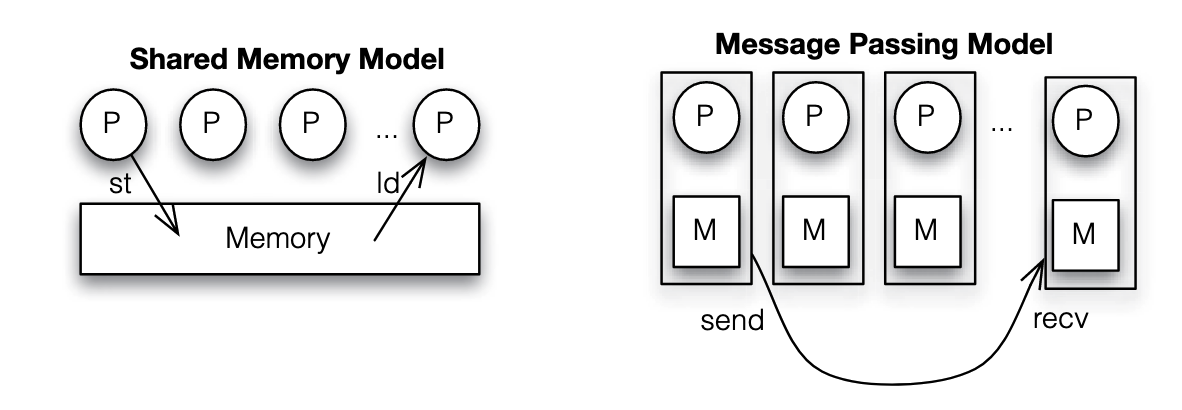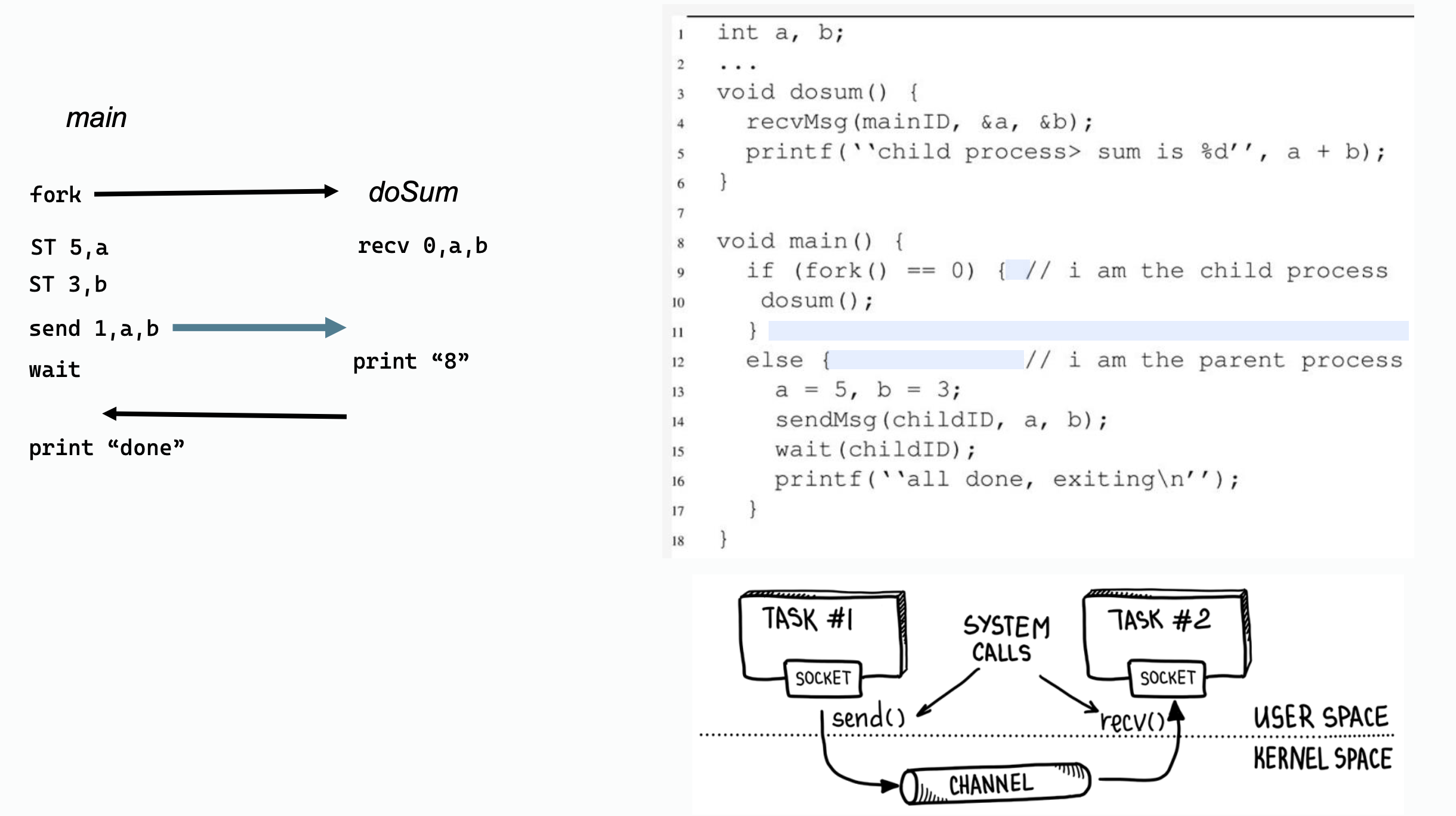Parallel Programming Models
Programming Models

in the figure above shared memory mechanism takes place in user space, while the message passing sends messages via a channel in kernel space(only send and recv are handled in user space).
| Scheme | Data Distribution | Communication | Synchronization |
|---|---|---|---|
| Shared Memory | Partition the data among threads, each thread processes a portion of the data | Communication is implicit through shared variables, threads read and write to shared memory locations | barriers among thread to check if they reach the same point, or locks when accessing critical section |
| Message Passing | Distribute data to each process, often by sending data over a network, each process works on its local data segment. | Use message passing functions to send and receive data. Communication is explicit | Synchronization occurs through message exchanges. Processes may use barriers or collective communication operations |
Shared Memory

Pros:
-
Fast Communication:
- Processes can directly read and write to the shared memory, which typically results in faster data access and communication.
-
Ease of Data Sharing:
- Shared memory allows easy sharing of large data structures (like arrays) between processes without the need to copy or serialize data.
-
Low Overhead:
- Since processes or threads can access the same memory space, there's no overhead associated with sending or receiving messages.
-
Suitable for Multi-threading:
- Shared memory is well-suited for multi-threading within a single machine, where all threads naturally share the same memory space.
Cons:
-
Complex Synchronization:
- Managing access to shared memory requires synchronization mechanisms like locks, semaphores, or monitors to prevent race conditions, which can be complex and error-prone.
-
Scalability Issues:
- Shared memory doesn't scale well across multiple machines in a distributed system since physical memory can't be shared across different systems.
-
Potential for Bugs:
- Bugs like deadlocks, race conditions, and data corruption are common issues when improper synchronization is used.
-
Limited to Single System:
- Shared memory is typically confined to a single system or node, limiting its use in distributed environments.
Message Passing

in message-passing schemes:
- Send can be either blocking or non-blocking.
- Recv is required to actually receive the data sent, but send operations do not necessarily need recv to be called immediately, especially in non-blocking modes.
Pros:
-
Scalability:
- Message passing scales well across distributed systems and clusters, as processes can run on different machines and communicate over a network.
-
Clear Separation:
- Communication via message passing enforces a clear separation between processes, reducing the risk of accidental interference or shared data corruption.
-
Simpler Debugging:
- Because there’s no shared state, it's often easier to debug programs using message passing since the interaction between processes is explicitly defined.
-
Better for Distributed Systems:
- Message passing is inherently designed for distributed systems, making it suitable for applications running on multiple nodes or in the cloud.
Cons:
-
Higher Overhead:
- Sending and receiving messages introduces overhead, especially with large amounts of data or in high-frequency communication scenarios.
-
Complexity in Data Sharing:
- Sharing complex data structures requires serialization and deserialization, which can add to the complexity and time consumption.
-
Latency Issues:
- In distributed environments, message passing can be slower due to network latency, particularly for systems spread across long distances.
-
Increased Programming Effort:
- Designing a system around message passing can be more complex as it requires explicitly defining the communication protocols and handling message errors or losses.
The difference:
- Shared memory is faster and simpler for intra-machine communication but requires careful synchronization and is limited to single systems.
- Message passing is more scalable and suitable for distributed systems but introduces additional overhead and complexity.
The choice between shared memory and message passing depends on the specific requirements of the application, such as performance, scalability, and ease of programming.